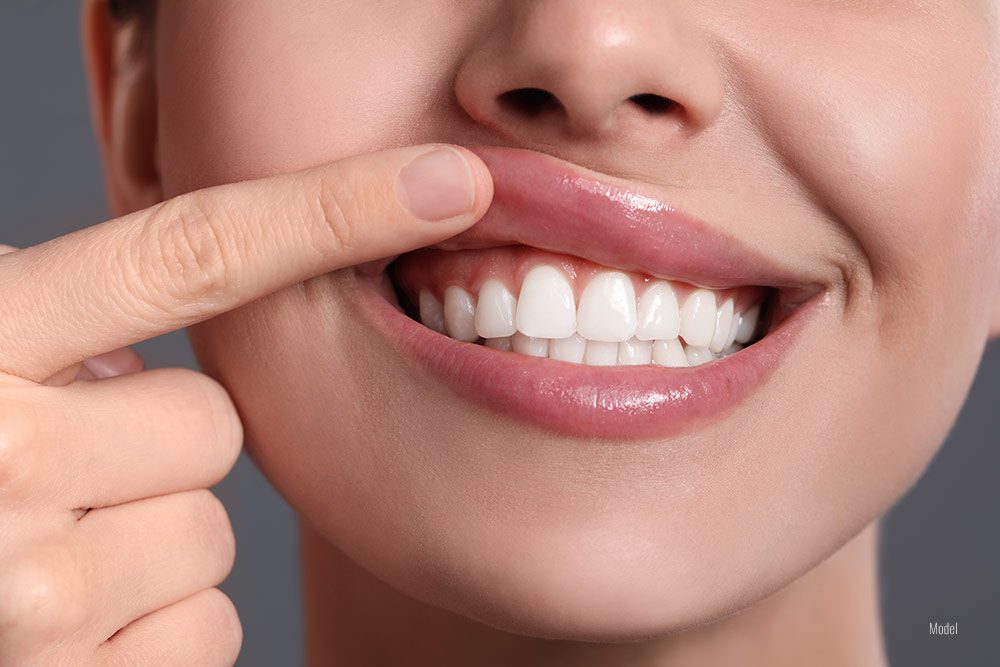Tips For Avoiding Gum Disease
Posted April 30, 2024 in Gum Disease
Unlike other dental issues, gum disease can sneak up on you. It is often pain-free, so you don’t notice it until your dentist points it out. Millions of people have some form of gum disease, but that doesn’t mean it’s not preventable. This blog discusses some of the best ways to keep your gums healthy to avoid gum disease and its effects.
4 Min Read:
What Is Gum Disease?
Your smile is a calling card to the world, so potential tooth loss is a serious matter. Gum disease, also known as periodontal disease or periodontitis, is the inflammation and infection of the tissues supporting the teeth, including the gums and bones. It’s a widespread issue, affecting almost half of all adults aged 30 and older in the United States. Gum disease is also the leading cause of tooth loss, making patient education crucial.
What Causes Gum Disease?
An accumulation of plaque is the primary trigger of gum disease. This sticky film of bacteria causes damage to the tooth’s surface, breaks down enamel, and irritates soft tissues. As time passes, the gums start to recede, forming pockets that trap more bacteria between the teeth and gums. This paves the way for infection and the progression of periodontitis.
Some people’s genetics predispose them to gum disease for various reasons, such as how their immune system responds to bacterial infection.
Plaque buildup can harden into calculus or tartar—these materials are, by and large, the result of poor oral hygiene and lack of brushing and flossing habits. This means the overwhelming majority of periodontitis cases are preventable.
Is Gum Disease Contagious?
Gum disease bacteria can pass from person to person. Brief contact won’t put you at risk, but prolonged or repeated contact, such as through kissing or sharing food and drinks can increase your risk.
What Are the Symptoms of Gum Disease?
Gum disease can be tricky to spot because it occurs slowly over time. Some symptoms might be signs of periodontitis:
- Swollen, tender gums
- Gums that are reddish or purplish in color
- Bleeding
- Halitosis (bad breath)
- Unpleasant taste
- Pain when chewing
- Receding gums
- Loose teeth
How Can I Prevent Gum Disease?
Gum disease can respond positively to treatment but cannot be cured in its late stages. Prevention is key. Here are some tips on how you can avoid gum disease.
Proper Oral Hygiene
To maintain proper oral hygiene, make sure you:
- Brush your teeth at least twice a day. Talk to your dentist about proper brushing techniques, and consider using an electric toothbrush to supercharge plaque removal for a superior clean.
- Floss thoroughly every day, scraping the tooth just below the surface of the gums.
- Visit the dentist regularly for check ups and professional cleanings.
Encourage Saliva Flow
Saliva washes away food particles and maintains the pH levels in your mouth. To encourage healthy saliva flow:
- Stay hydrated—saliva is 99% water!
- Consider chewing xylitol gum after meals. Xylitol is a natural sweetener that can help balance the pH levels in the mouth and encourage remineralization of teeth.
- Don’t smoke—in addition to increasing your risk of developing cancer, smoking has adverse effects on saliva production and quality as well as overall oral hygiene.
- Bonus: Drinking plain green or black tea without added sugar can suppress bacteria formation in the mouth.
Avoid Sugary Foods
Sugar feeds harmful bacteria. The bacteria then produce acid, which can break down tooth enamel (hard outer layer). From here, gingivitis, cavities, and gum disease can start to develop.
Liquid sugar, such as in juices or sodas, is hard to clean even with brushing, so try to eliminate this form of sugar from your diet. Non-liquid sugar leaves residue on the surface of teeth that is harder for saliva to wash away, which can lead to tooth decay and gum disease.
Starchy foods, like white bread, pasta, and potatoes (including potato chips!), basically turn into sugar when they enter the mouth, so limit these foods as well.
Eat Tooth-Friendly Foods
On the other hand, some foods are good for your teeth and gums. These include foods that are rich in calcium, as well as fibrous fruits and vegetables that stimulate saliva production and naturally clean the teeth’s surfaces, such as:
- Yogurt and dairy products
- Celery
- Shiitake mushrooms
- Apples
- Carrots
Want to Learn More About Gum Disease in Riverside, CA?
Whether you are concerned that you or a loved one is suffering from gum disease or you simply want to be educated by an expert on how to prevent periodontitis, Dr. Tomazin and his team are here to help. Fill out our online contact form or call us at (951) 381-8872 today.